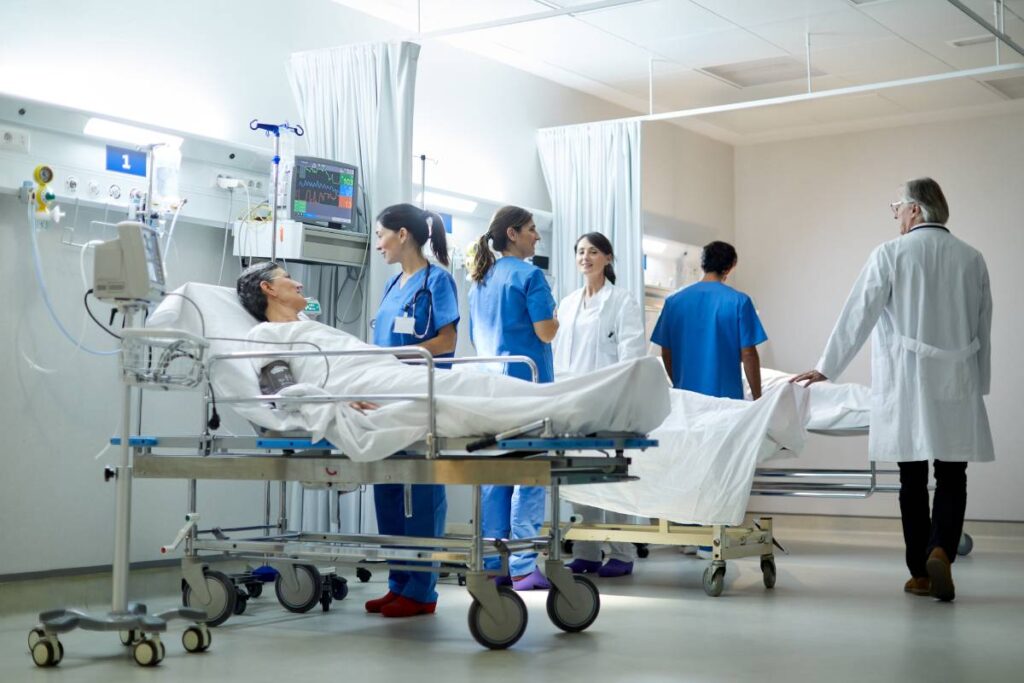Immediately following surgery, patients are taken to the post-anesthesia care unit (PACU). The PACU is under the direction of the anesthesia provider and is a place in which a patient’s vital signs are closely monitored, fluids are administered, and pain management is begun or continued. The PACU aims to improve the provision of care for high-risk surgical patients [1]. Here is what to expect in the PACU.
PACU nursing staff monitors patients and manages patient challenges while patients are recovering from anesthesia. Part of what to expect in the PACU is that a nurse will frequently check vital signs, probe dressings, and regulate intravenous fluids and pain medication administration as needed. It is important to notify nurses of any pain; they will continue to help manage it as efficiently as possible [2].
Some patients develop nausea in the PACU. Though nausea is a relatively common side effect of anesthesia, it is still useful to tell the nurse about it right away in order to best treat it. A patient may also feel dizzy, sleepy, or forgetful as a result of the medication administered intraoperatively [3].
In some cases, a patient may need to be transferred to the intensive care unit for further close monitoring. Intensive care is most often required for patients in shock, on mechanical ventilation, recovering from heart attacks or major surgery, or with acute renal failure. In the rare instances when a patient urgently needs intensive care after outpatient surgery, they are transferred to the nearest appropriate hospital for care. In the intensive care unit, clinicians closely monitor patients minute-by-minute [4].
A patient’s family and friends may wish to visit after surgery. Whether visits to the PACU are allowed is specific to each facility. It is important to check with the PACU’s nursing staff to know what to expect. In the pediatric PACU, a parent usually accompanies their child; for health and safety reasons, only two adults are typically allowed at a time [5].
If a patient came to the surgical facility with a pain or insulin home pump, C-Pap or Bi-Pap machine, these will be returned to them. If a patient has an automatic internal compression device which was turned off prior to surgery, it will be turned back on before the patient goes home.
The type of anesthesia a patient receives will guide their length of stay and postoperative course. In some cases, a longer PACU stay may be necessary to ensure that a patient receives the best care possible and is as comfortable as possible prior to discharge.
A patient will typically be provided with printed discharge instructions for their at-home care prior to discharge so that they know what to expect once they leave the PACU. Nursing staff will review the instructions with them alongside a family member or friend. These instructions will include diet, pain medications, any activity restrictions, and a planned follow-up if needed, and any signs to watch for and to report to your surgeon if required.
A patient must have a family member or friend drive them home after anesthesia; patients should not drive for 24 hours as they may feel dizzy or drowsy postoperatively. It is also essential for someone to stay with the patient during the first 24 hours after surgery in order to have someone around to help in case of an emergency.
References
- Simpson, J. C. & Moonesinghe, S. R. Introduction to the postanaesthetic care unit. Perioper. Med. 2, 5 (2013). doi: 10.1186/2047-0525-2-5.
- What to expect immediately after surgery – UCLA Santa Monica Medical Center | UCLA Health. Available at: https://www.uclahealth.org/hospitals/santa-monica/patients-visitors/orthospine-preoperative/what-expect-immediately-after-surgery. (Accessed: 24th February 2023)
- What to Expect in the Postanesthesia Care Unit (PACU) | Stony Brook Medicine. Available at: https://www.stonybrookmedicine.edu/patientcare/PreSurgicalAdmissions/PostanesthesiaCareUnit. (Accessed: 24th February 2023)
- Recovering From Surgery/Intensive Care | Johns Hopkins Medicine. Available at: https://www.hopkinsmedicine.org/health/treatment-tests-and-therapies/recovering-from-surgery–intensive-care. (Accessed: 24th February 2023)
- In the Recovery Room | Children’s Hospital of Philadelphia. Available at: https://www.chop.edu/patients-and-visitors/guide-your-childs-surgery/your-childs-recovery-after-surgery/recovery-room. (Accessed: 24th February 2023)



